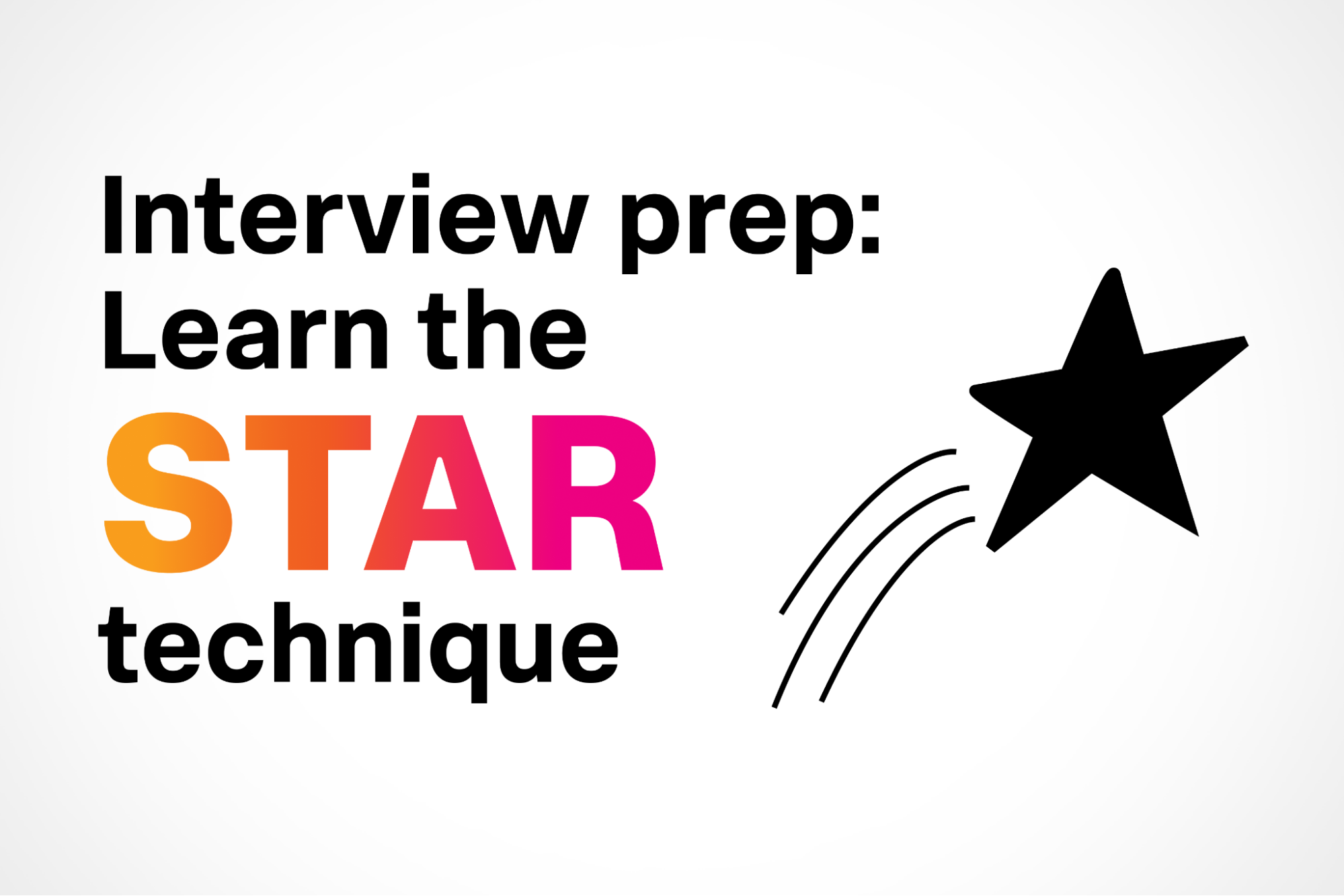Mastering Interviews Using the STAR Technique

If you’re preparing for an interview at Splunk that uses a behavioral interviewing approach, we’ve got you covered. We recommend using the STAR technique to structure your responses: describe the Situation, outline the Task, explain your Actions, and highlight the Results. This method will help you effectively convey your experiences and skills. Before we talk about the STAR technique, let’s understand the behavioral interview.
What Is a Behavioral Interview?
A behavioral interview focuses on assessing your past behavior to predict your suitability for the job. Essentially, the interviewers are looking for stories from your past experiences that demonstrate your ability to perform the job you're applying for.
Interviewers and hiring managers often ask behavioral questions because they are dynamic questions that showcase your skills, problem solving abilities, and past achievements while also testing your ability to think. You should aim to answer these questions fully, clearly, and effectively. The STAR technique is one way to ensure that you succeed.
What Is the STAR Technique?
STAR stands for Situation, Task, Action, and Result. When answering a behavioral question in an interview, you should cover each of these components to keep your response clear.

Let's take a deep dive into the STAR method and how to use this approach:
Situation: Describe a specific moment/situation that you have experienced in the past. It can be a situation that you handled in your current organization or in the past. What was the situation (detailed)? What was the challenge at hand? Why were you working on it, and how essential was it to you, your team, or your organization?
Task: Explain your specific tasks, problems, or actions. What did you do? What was the ultimate goal? What was the expectation of you?
Action: Explain specifically what you (not the team) did. What steps did you take to deal with the situation, complete your work, or meet your goal? How did you do that? What tools and skills did you employ? How did you complete the challenge?
Result: Finally, describe the actual outcome. What happened during the happy ending? What were the end results? How did you contribute to a solution?
![]() Tip: After discussing the outcome, be sure to highlight any quantifiable results, such as improvements in performance, cost savings, or client satisfaction. Then, discuss what you learned from the specific event and how you plan to use these lessons in the future. This will demonstrate to the interviewer that you are coachable, & results-oriented.
Tip: After discussing the outcome, be sure to highlight any quantifiable results, such as improvements in performance, cost savings, or client satisfaction. Then, discuss what you learned from the specific event and how you plan to use these lessons in the future. This will demonstrate to the interviewer that you are coachable, & results-oriented.
To identify STAR behavioral questions in interviews, look for questions that start like:A
- "Tell me about a time when..."
- "Describe a situation where..."
- “Have you ever…”
- "Give me an example of..."
- "Share an experience when..."
These questions frequently lead you to share particular examples of how you've dealt with similar events or obstacles in the past. When you encounter queries like this, you should utilize the STAR approach to deliver a clear, well-organized solution.
Sample Behavioral Questions & Answers Using the STAR Technique:
Question 1: Tell me about a time when you had to handle a difficult stakeholder or customer.
Situation: As a software developer working for a tech startup in Bangalore, I was tasked with developing a new feature for a client's e-commerce platform. However, during the development process, the client unexpectedly requested significant changes to the feature that would require a substantial amount of additional work and resources.
Task: My task was to address the client's new requirements while ensuring that the project remained on schedule and within budget constraints.
Action: I immediately reached out to the client to discuss the implications of the requested changes. I presented a detailed analysis of the impact on the timeline, budget, and overall project scope. Instead of simply pushing back on the changes, I proposed alternative solutions that would meet their needs while minimizing the impact on the project timeline.
I collaborated closely with the project manager and the rest of the development team to re-evaluate our approach and identify the most efficient way to incorporate the new requirements. We prioritized the necessary tasks, optimized our development process, and communicated regularly with the client to provide updates on our progress.
Result: Despite the additional effort necessary, we successfully delivered the new feature two weeks ahead of the revised deadline while staying within 5% of the original budget. Our adaptability and efficiency resulted in a 20% boost in client satisfaction, according to a post-project feedback survey. Furthermore, the client extended our contract for an additional project, resulting in a 30% increase in revenue for this client over the next quarter.
Learning: This experience taught me the value of being flexible and proactive. I learned the importance of quickly assessing the impact of changes, offering practical alternatives, and keeping clear communication with the client and team. It showed me that teamwork and keeping everyone informed are key to successfully managing unexpected challenges and delivering results.
Question 2: Have you ever failed at any task at work? What did you learn from that failure?
Situation: In one instance at work, I was given a challenging project deadline that required coordination with multiple teams, but due to a miscommunication about the project scope, I underestimated the time needed for completion.
Task: My task was to deliver the project on time while ensuring a high level of quality and meeting all requirements.
Action: As the deadline approached, it became evident that I wouldn't meet the target due to the underestimated workload. Instead of panicking, I immediately informed my supervisor about the situation, took responsibility for the oversight, and proposed a revised timeline with a detailed plan to catch up on the delays. I actively sought assistance from team members to redistribute tasks to expedite the project's progress.
Result: By openly acknowledging the mistake, adjusting the timeline, and seeking support from my team, we managed to complete the project successfully, only three days behind the original schedule. Despite the delay, the project's quality was maintained, and the client rated our work as 9 out of 10 in their feedback survey. This experience improved our team's project planning process, reducing future project delays by 15%.
Learning: This experience made me realize how important it is to communicate clearly, estimate projects accurately, and be willing to ask for assistance when necessary. I discovered that failures can present vital chances for development, which has helped me become a more diligent and proactive team player. The idea that mistakes can serve as crucial teaching opportunities for both professional and personal development was reaffirmed by this event.
To help you further prepare, we’ve gathered some frequently asked behavioral questions:
- Tell me about a time when you had to deal with a difficult decision at work. What factors did you consider, and how did you come to a resolution?
- Describe a project where you had to demonstrate your problem-solving skills. What was the problem, and how did you approach solving it? What was the impact of your solution?
- Tell me about a project you led and the results you achieved.
- Describe a situation where you had to adapt to a new process or technology.
- Can you share an experience where you made a mistake at work? How did you handle it?
- Tell me about a time when you had to handle a difficult stakeholder or customer. What was the situation and how did you resolve it?
- Tell me about a time when you had to take the lead on a project or initiative. What actions did you take, and what were the results of your leadership?
- Describe a situation where you had to work under a tight deadline. How did you manage your time and resources to meet the deadline, and what was the result?
- Can you share a time when you had to work with a difficult colleague or team member? How did you handle the situation, and what was the outcome?
We hope this helps prepare you for your interview at Splunk! If you have not yet applied, explore open opportunities at splunk.com/careers.
Related Articles
About Splunk
The world’s leading organizations rely on Splunk, a Cisco company, to continuously strengthen digital resilience with our unified security and observability platform, powered by industry-leading AI.
Our customers trust Splunk’s award-winning security and observability solutions to secure and improve the reliability of their complex digital environments, at any scale.




